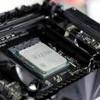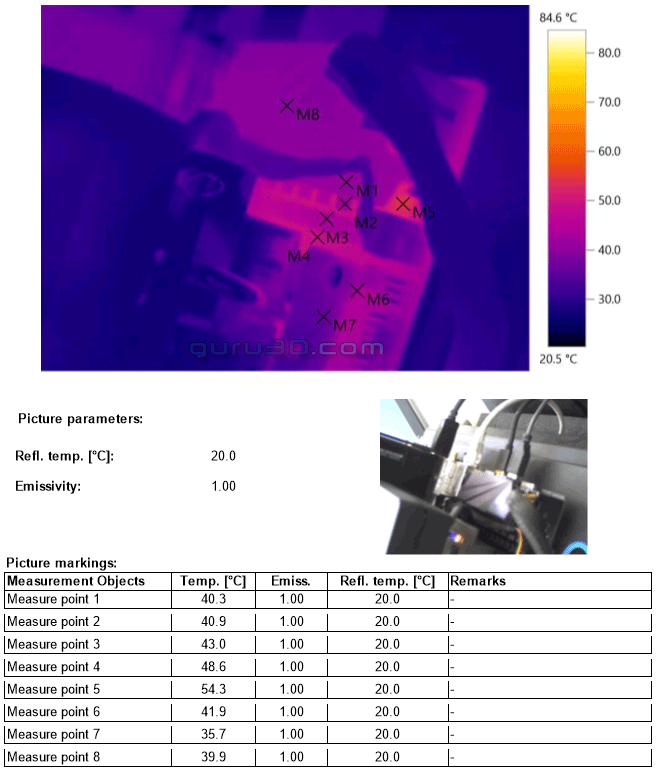VRM Area Thermals
VRM Area Thermals
Lately, it has been requested if we could list VRM temperatures. We could hook into sensors and start measuring. but the best way really is to look at the VRM area with a thermal camera. This way you can detect hot-spots and/or worrying stuff. We test:
- Normal conditions / default settings
- Overclocked processor at 4200 MHz (we dropped 4300 MHz and settled at 4200 MHz as we do all VRM testing at 4200 MHz for the Ryzen reviews). All cores overclocked and 1.425~1.45 Volts
Default clock frequencies all cores stressed
Above a thermal image of the VRM Area and corresponding temperatures - this is under full CPU load and measured after 5 minutes in default conditions. M1 is the VRM heatsink under it the MOSFETs, M2+M3 are still part of the VRM zone. There's just nothing worrying to see here whatsoever.
Overclock 4200 MHz / All cores stressed / 1.45V
Above a thermal image of the VRM Area and corresponding temperatures - this is under full CPU load and measured after 5 minutes in overclocked conditions. M1 is the VRM heatsink under it, the MOSFETs. M1 to M4 are roughly the VRM hotspots with chokes and capacitors etc. The board gets warmer, however, is not passing 70 degrees C.
I do need to mention that the stock Wraith cooler is blowing heaps of air over this area. Ergo the dynamic would look different with liquid cooling. But really, it is common sense that if you overclock that you at the very least account for sufficient airflow blowing over that VRM area.



